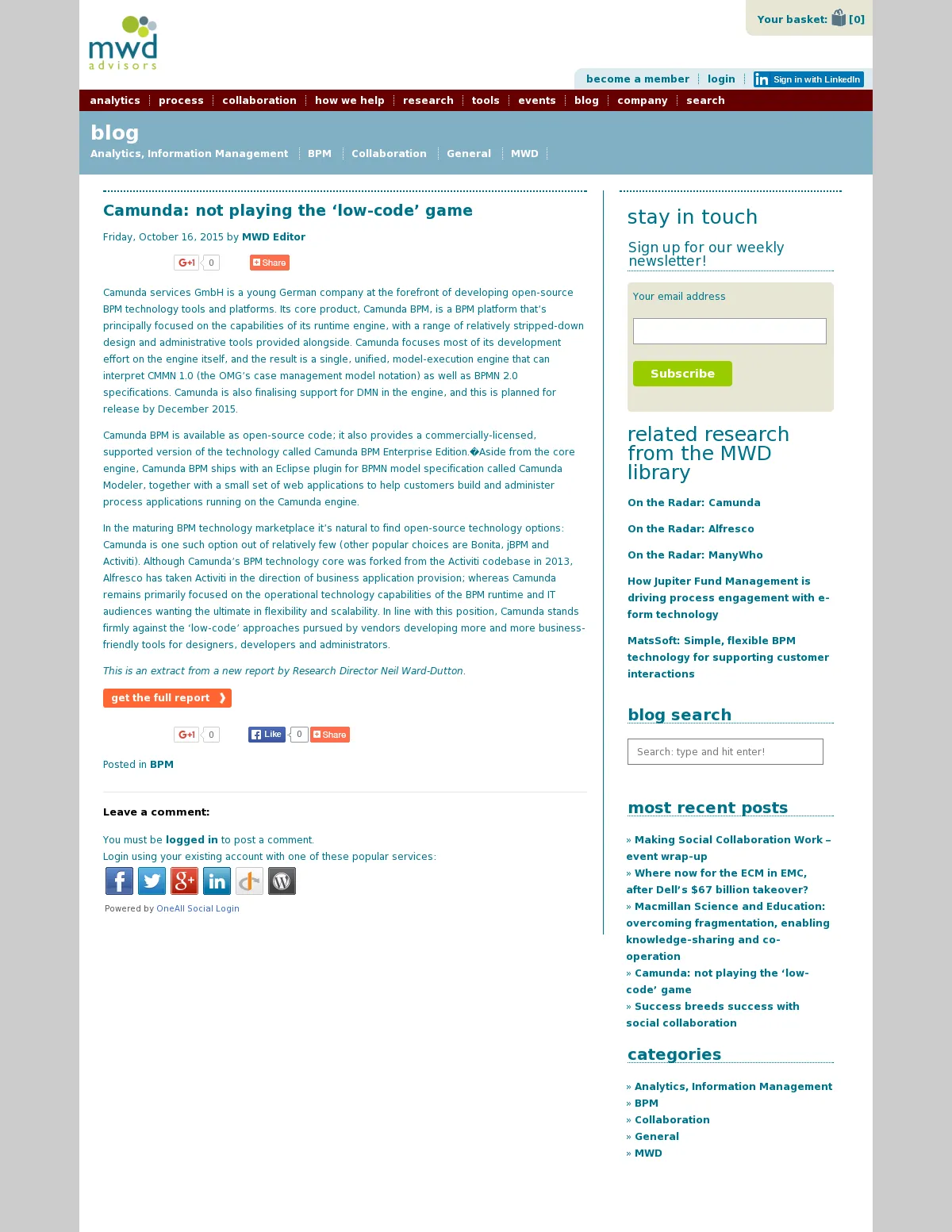Camunda: not playing the ‘low-code’ game
Camunda services GmbH is a young German company at the forefront of developing open-source BPM technology tools and platforms. Its core product, Camunda BPM, is a BPM platform that’s principally focused on the capabilities of its runtime engine, with a range of relatively stripped-down design and administrative tools provided alongside. Camunda focuses most of its development effort on the engine itself, and the result is a single, unified, model-execution engine that can interpret CMMN 1.0 (the OMG’s case management model notation) as well as BPMN 2.0 specifications. Camunda is also finalising support for DMN in the engine, and this is planned for release by December 2015.
Camunda BPM is available as open-source code; it also provides a commercially-licensed, supported version of the technology called Camunda BPM Enterprise Edition. Aside from the core engine, Camunda BPM ships with an Eclipse plugin for BPMN model specification called Camunda Modeler, together with a small set of web applications to help customers build and administer process applications running on the Camunda engine.
In the maturing BPM technology marketplace it’s natural to find open-source technology options: Camunda is one such option out of relatively few (other popular choices are Bonita, jBPM and Activiti). Although Camunda’s BPM technology core was forked from the Activiti codebase in 2013, Alfresco has taken Activiti in the direction of business application provision; whereas Camunda remains primarily focused on the operational technology capabilities of the BPM runtime and IT audiences wanting the ultimate in flexibility and scalability. In line with this position, Camunda stands firmly against the ‘low-code’ approaches pursued by vendors developing more and more business-friendly tools for designers, developers and administrators.
This is an extract from a new report by Research Director Neil Ward-Dutton.
